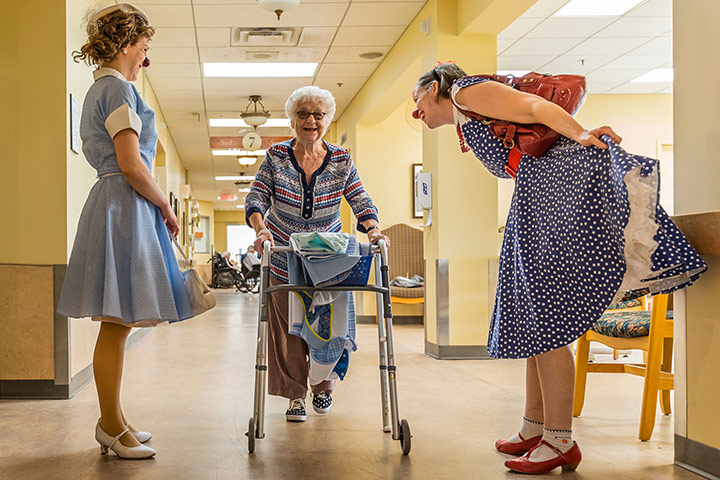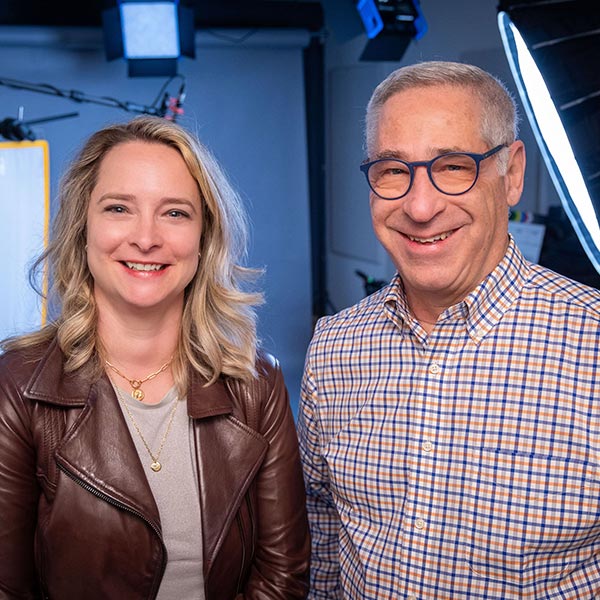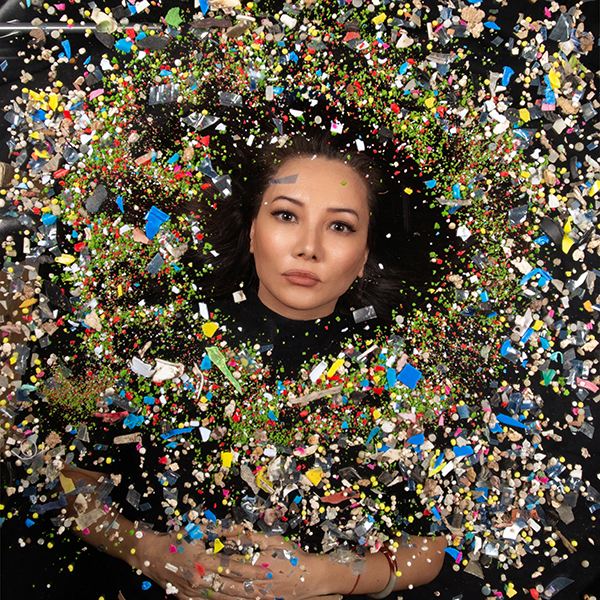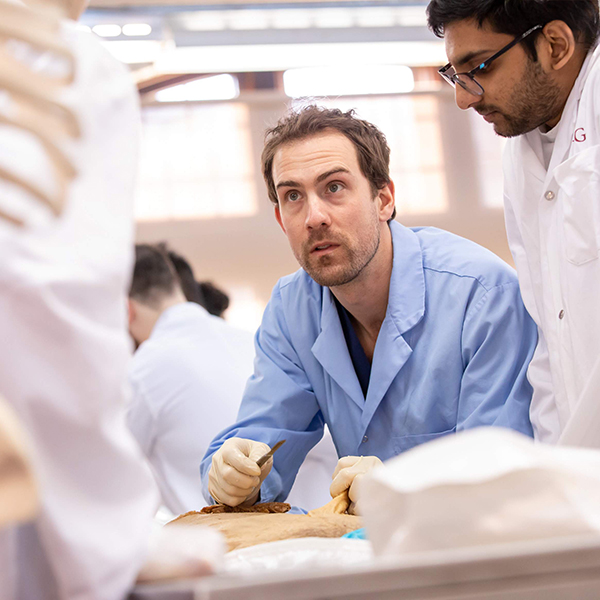Melissa Holland, BEd’98, is well aware of what some people think about clowns.
“Whenever somebody mentions It…” she says, her voice trailing off as she refers to Stephen King’s 1986 horror novel in which an evil clown preys on young children. There are plenty of people who are unnerved by creatures like King’s Pennywise or American Horror Story’s Twisty the Clown or the Joker. “But those aren’t clowns,” insists Holland. “They’re monsters.”
Holland would know. She is, in fact, a clown. She is the real deal.
In 2002, Holland co-founded the Dr. Clown Foundation, which uses therapeutic clowns to provide joy, relief, and comfort to hospitalized children and elderly people living in care homes. Today, the foundation employs 56 clowns working in 65 establishments, guided by a team of medical experts with specialities in neuropsychology, pediatric care, and geriatric care, among others.
The foundation’s clowns visit more than 40,000 children and 45,000 seniors each year.
Therapy clowns first made their appearance in Canada and the United States in 1986. Since then, their impact has been well documented, with studies showing that medical clowning reduces patients’ anxiety, improves their mood, and makes it easier for them to communicate with their doctors and nurses – which in turn can improve their health outcomes.

Holland knew nothing of this when she started clowning. Born and raised in a theatre-loving family in Montreal, she began performing Shakespeare as a child and ended up studying acting for a year at John Abbott College.
The experience left her feeling like something was missing. She liked the camaraderie of performing with fellow actors, and she enjoyed being in the spotlight. “But it felt a little hollow to be so focused on the self,” she says. If she was going to perform, she wanted it to be in service of something beyond her own self-gratification.
She enrolled in Concordia University’s three-year drama and education program. She followed that up with a bachelor’s degree in education at McGill. During that time, she took a summer workshop with master clown Sue Morrison.
“It was the most amazing, creative, personal, spiritual experience,” Holland says. Rather than inventing a character from scratch, clowning “is really just an exaggerated version of yourself.” Traits that might otherwise be suppressed are brought to the surface. “It can actually be pretty therapeutic,” she says. “There’s a lot of depth to it.”
As much as Holland enjoyed the experience, she thought her time as a clown would end there. She had no interest in being a circus or party clown. So, she applied for a working holiday visa and moved to Scotland to work as a drama teacher.
While she was there, she learned about a pilot project that was sending clowns to help patients in hospitals. Holland spent six weeks receiving psycho-social training for the initiative before diving in with a partner. She felt like she had finally found her calling. “It was almost a ‘pinch me’ kind of thing,” she says.
“It’s about giving control to the patient. If we do a magic trick, the clowns might not be able to do the trick, but the child can take the magic wand and then suddenly it works.”
Melissa Holland, co-founder of the Dr. Clown Foundation
When her visa expired, Holland vowed to continue her work back home in Canada. Therapy clown programs existed in other parts of the country, but not in Quebec. Working briefly at one such program in Windsor, she met another clown enthusiast named Olivier-Hugues Terreault, and along with Florence Vinit and Germaine Gibara, they founded the Dr. Clown Foundation in 2002.
The way they operate may be different to what most people imagine. These are not circus clowns with loud colours and ostentatious makeup; what sets them apart as clowns is simply their red noses. Each clown performs as a character they developed during their training.
When Holland interacts with seniors as a clown, for instance, she takes on the persona of Chérie Labelle, whom she describes as “naive, curious, teasing, looking for Mr. Right – who needs to be taller than her and at least have a job. She loves chocolate chip cookies, loves stories and singing and dancing, though she does neither particularly well, but she doesn’t know that. She always tries her best.”
In a hospital, they knock on the door of a room, and if a child or their parents allow them to enter, the clowns begin their work.
“We are there with a very different purpose [than] a doctor or nurse who has set clinical tasks,” says Holland. “The posture of a clown is openness and being curious. We’re not putting on a show – it’s a visit that is personalized for everyone we see. It’s about giving control to the patient. If we do a magic trick, the clowns might not be able to do the trick, but the child can take the magic wand and then suddenly it works.”
In old age homes, where the Dr. Clown operation is called La Belle Visite, the clowns adopt a different approach, acting with 1950s-style clothing and performing as members of a large extended family coming to visit. “With the seniors it’s more about life questions. They’re feeling vulnerable and you want them to feel valuable,” she says.
The foundation unexpectedly found itself at the centre of a controversy in 2009, after it received a grant from the Quebec government to help provide services in care homes. Some negative media coverage suggested that the foundation was frivolous: the government was paying for clowns when it couldn’t even take care of basic services.
Today, the benefits of therapeutic clowning are more widely understood and appreciated, and the foundation is looking to expand the services it provides. It is currently exploring how clowns might help people struggling with mental health issues, children with autism and other special needs, or adults receiving palliative care. And there are opportunities beyond the healthcare system, like working with prisoners, unhoused people or asylum seekers fleeing traumatic circumstances.
For the clowns themselves, the work can be gratifying but also emotionally taxing. They have regular psychosocial meetings — and an on-call therapist — to deal with the hardship of seeing some patients suffer or pass away. “Wearing the nose gives you a certain licence to be free in your emotions and exchanges,” says Holland. “But at the end of the day, you take the nose off and you do have this feeling of, ‘Wow, that was something.’ You’re dealing with so many layers of vulnerability.”


